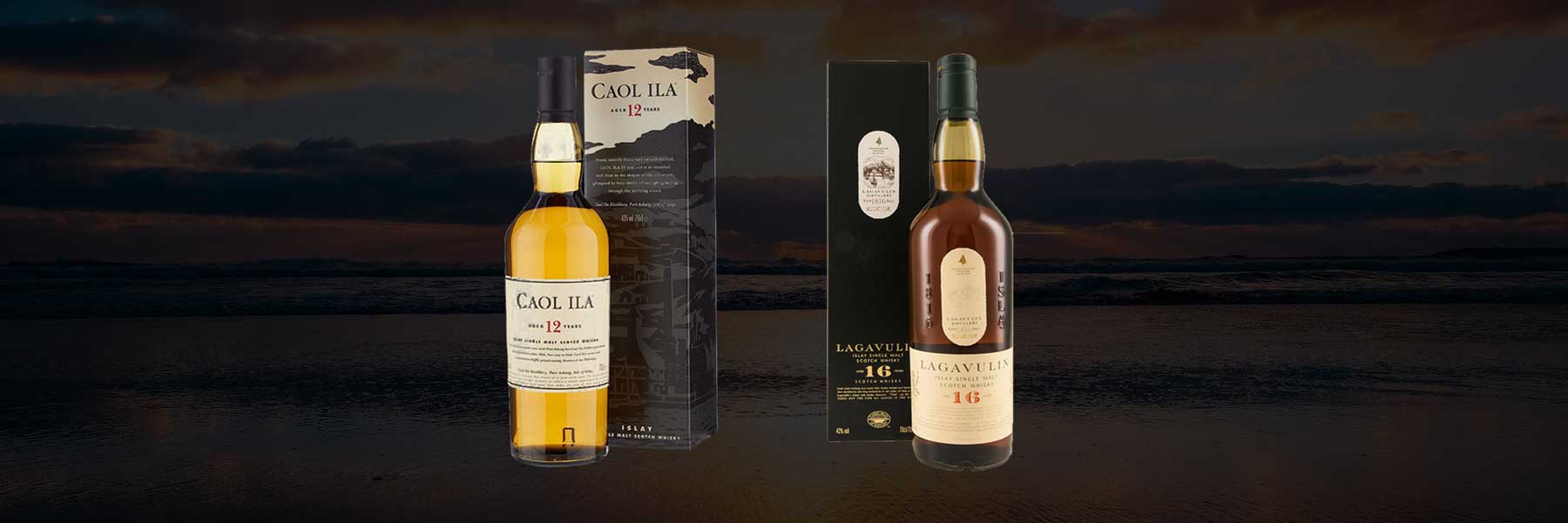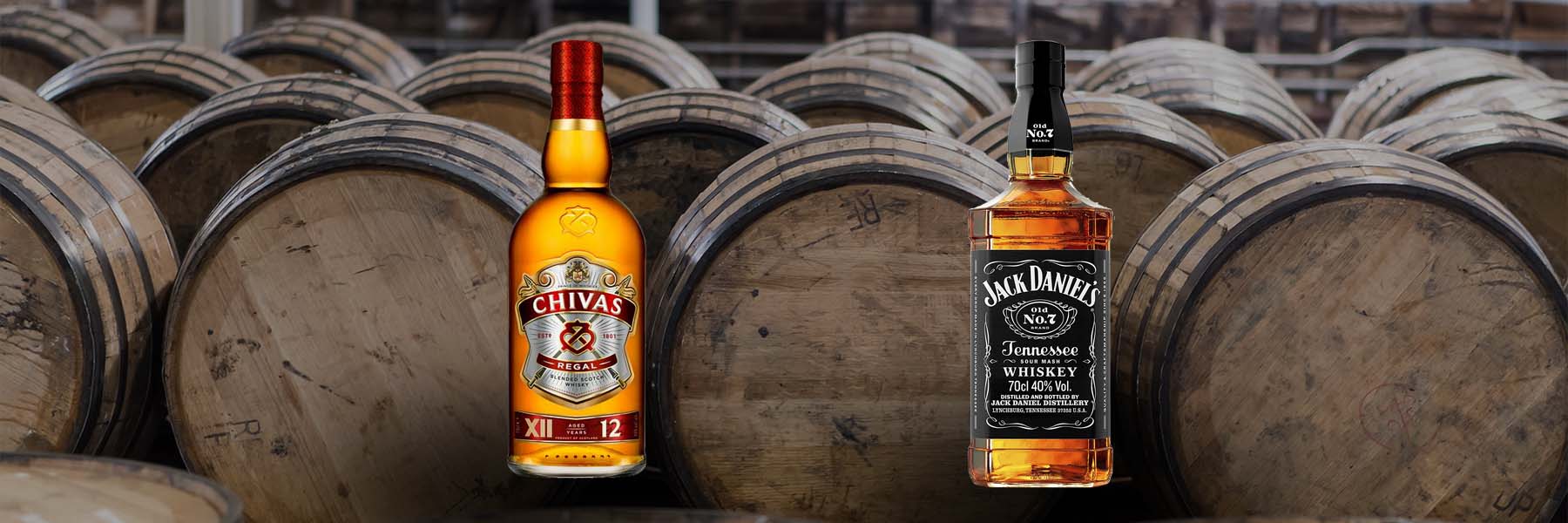Caol Ila 12 vs Lagavulin 16
Last updated on August 13th, 2024
Are you a whisky enthusiast looking to expand your whisky knowledge?
If so, you must be well-versed with two famous Islay malts; Caol Ila and Lagavulin. Scotch gurus have been savouring these exquisite drams for years now, famed for their intensely smoky personalities and full-bodied flavours. If a robust yet flavorful whisky experience is what you’re after, Caol Ila or Lagavulin should definitely be on the top of your list.
In this article, we’ll compare Caol Ila 12 vs Lagavulin 16, take a look at their differences and explore why these two malts have become so popular.
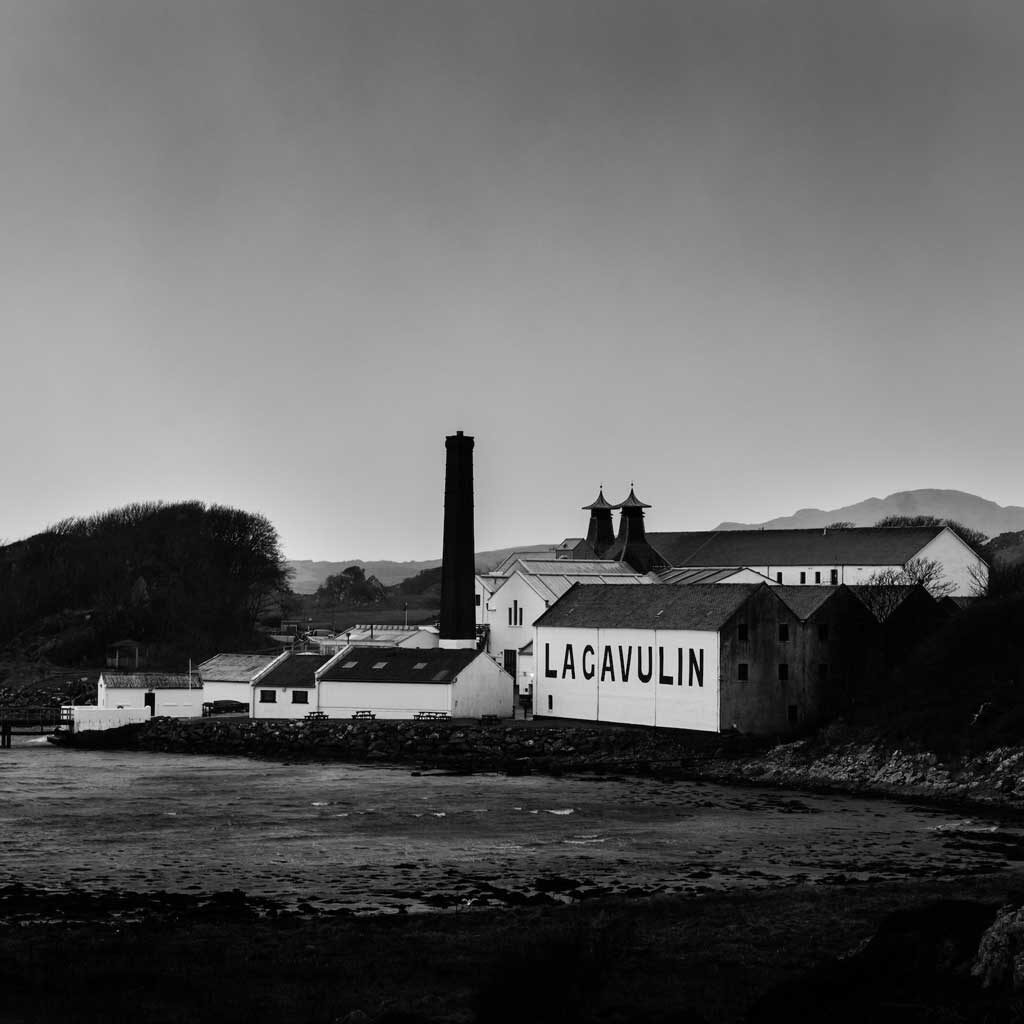
Lagavulin distillery is one of the oldest licensed distilleries in Scotland. It is located on the island of Islay and has been producing single malt Scotch whisky since the late 1700s. It was officially founded in 1816 by John Johnston, who had previously worked at the nearby Ardmore distillery. The same family purchased a second distillery on the same site in 1825, but production was absorbed into Lagavulin soon, in 1837.
In 1862 the distillery was purchased by John Logan Mackie, whose cousin, Sir Peter Mackie was a significant figure in late-nineteenth-century whisky. In 1890, he created the White Horse blend, co-founded Craigellachie distillery, and was regarded as a great innovator.
In 1988 the Lagavulin 16 was selected as one of the six Classic malts.
Caol Ila is produced on the Isle of Islay in Scotland. Its Gaelic name literally translates to “sound of Islay,” a tribute to its origins that were established in 1846 by Hector Henderson and whose first spirit was made available two years later. Initially intended for blending purposes, it wasn’t until several decades later when their production shifted towards creating single malt whiskies with a quality sure to delight any connoisseur’s palate.
In the 90s, Caol Ila underwent a massive renovation with its older stillhouse being replaced by an entirely new one. Shortly afterwards in the early 2000s, they opened up to visitors and even built a bottling plant later in 2008. From these expansions, this distillery can now produce well over 3 million litres of whisky each year – making it one of Islay’s most successful. One of their most popular single malt whiskies is the famous ‘Caol Ila 12’, which has become widely available due to its light smoky flavour. Additionally, many of Diageo’s blended whiskies use this expression as a component – including Johnnie Walker & Black & White.

Comparing distillation: Caol Ila 12 vs Lagavulin 16
As we’re comparing Caol Ila 12 vs Lagavulin 16, you’ll be interested to know that both distilleries use exactly the same malt source from nearby Port Ellen Maltings (also based on Islay). With both distilleries using the same source for their malt, this is a great example of distillery character affecting each of the brands’ resultant spirits.
Subsequently, the main difference between Caol Ila 12 and Lagavulin 16 comes down to their unique production processes.
Caol Ila 12 undergoes double distillation. This results in a whisky that is light and fruity with a smoky finish.
Lagavulin 16 on the other hand is made using a much slower double distillation process. This creates a whisky that is much richer, with a deep, smoky flavour and a long, lingering finish.
Lagavulin fills their stills to 95% capacity, whereas Caol Ila only fills them to 50-60%, which makes a huge difference in the final product.
Let’s look at each of these whiskies in a little more detail.
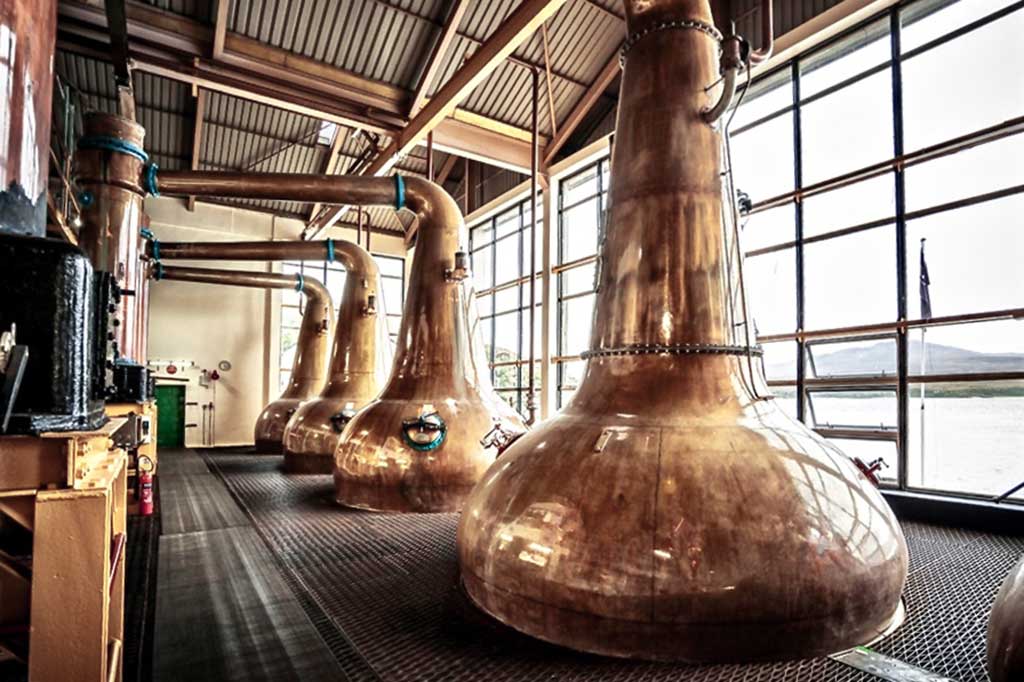
Making Caol Ila 12
Caol Ila is distilled using traditional means using hand-cut peat, slow-dried barley, and durable copper stills. As with every single malt, it starts with malted barley, which is milled, mashed, and fermented. The barley used for production is steeped in warm water for two days before it’s drained and then emptied into one of the 7 large 51 tonne drums at the Port Ellen malting house.
There, it’s allowed to germinate for 4 to 8 days before being removed and dried over a peat fire.
Once the barley has been dried, it is milled and mashed in the distillery’s mash tun. This process extracts the sugars from the barley and produces a sweet liquid called wort. The wort is then transferred to fermentation tanks, where it is mixed with yeast and allowed to ferment for up to two days.
The fermented wort is then distilled in a copper pot still known as the wash still. This process helps to concentrate and purify the spirit.
The whisky is then transferred to a mixture of former Bourbon and Sherry casks, where controlling the temperature and distillation time yields the precise flavour Caol Ila is after. These barrels have been re-charred and re-toasted which imparts a rich and complex flavour profile with notes of smoke, honey, dried fruit, and a hint of sea salt.
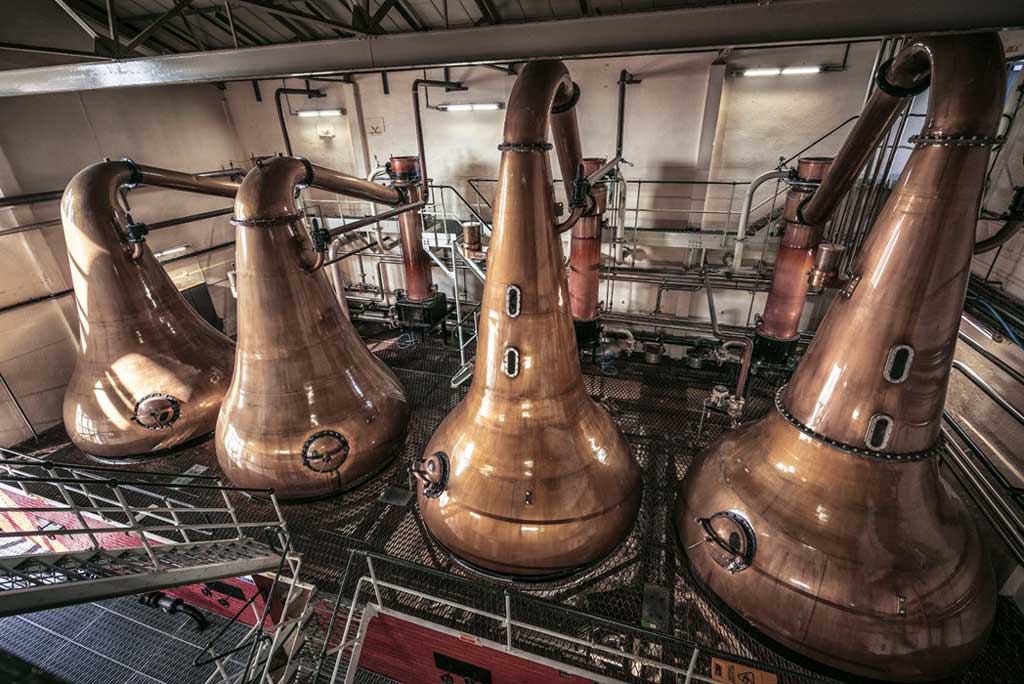
Making Lagavulin 16
Lagavulin 16 is one of the most esteemed Scotch whiskies in the world, and its production process is as complex as it is fascinating.
It begins with the malting of the barley that is grown in the region surrounding the distillery in Islay, Scotland. The barley is dried over peat fires, which imparts a unique smoky flavour to the malt. The malted barley is then ground and mixed with hot water to form the thick sugary wort.
The wort is cooled and transferred to large fermentation tanks, where yeast is added to let the fermentation process begin. Lagavulin’s fermentation cycle is one of the longest, lasting 55 hours, which breaks down the sugars in the wort into alcohol. With such an extensive fermentation period, lighter fruitier notes come to the fore within the wash.
The fermented wash is then transferred to copper pot stills where it’s heated to evaporate the alcohol. The vapourised alcohol condenses in the still’s neck, where it is collected and cooled, which creates a liquid known as “low wines.”
The low wines are then transferred to the spirit still, where they are heated and condensed again. The liquid collected from this second distillation is known as “feints”. The feints are then combined with the low wines and distilled a third time, producing a clear liquid called “new make spirit.”
The new make spirit is then transferred to oak casks and aged for 16 years, during which time it develops its distinctive flavour and colour. After 16 years, the spirit is removed from the casks and blended with other whiskies for consistency. The final product is then chill filtered and bottled as Lagavulin 16.
This lengthy and intricate production process is what makes Lagavulin 16 so special. The combination of locally grown barley, the smoky peat fire, and the slow maturation in oak casks creates a unique flavour and aroma that has made Lagavulin 16 a favourite among Scotch whisky fans around the world.
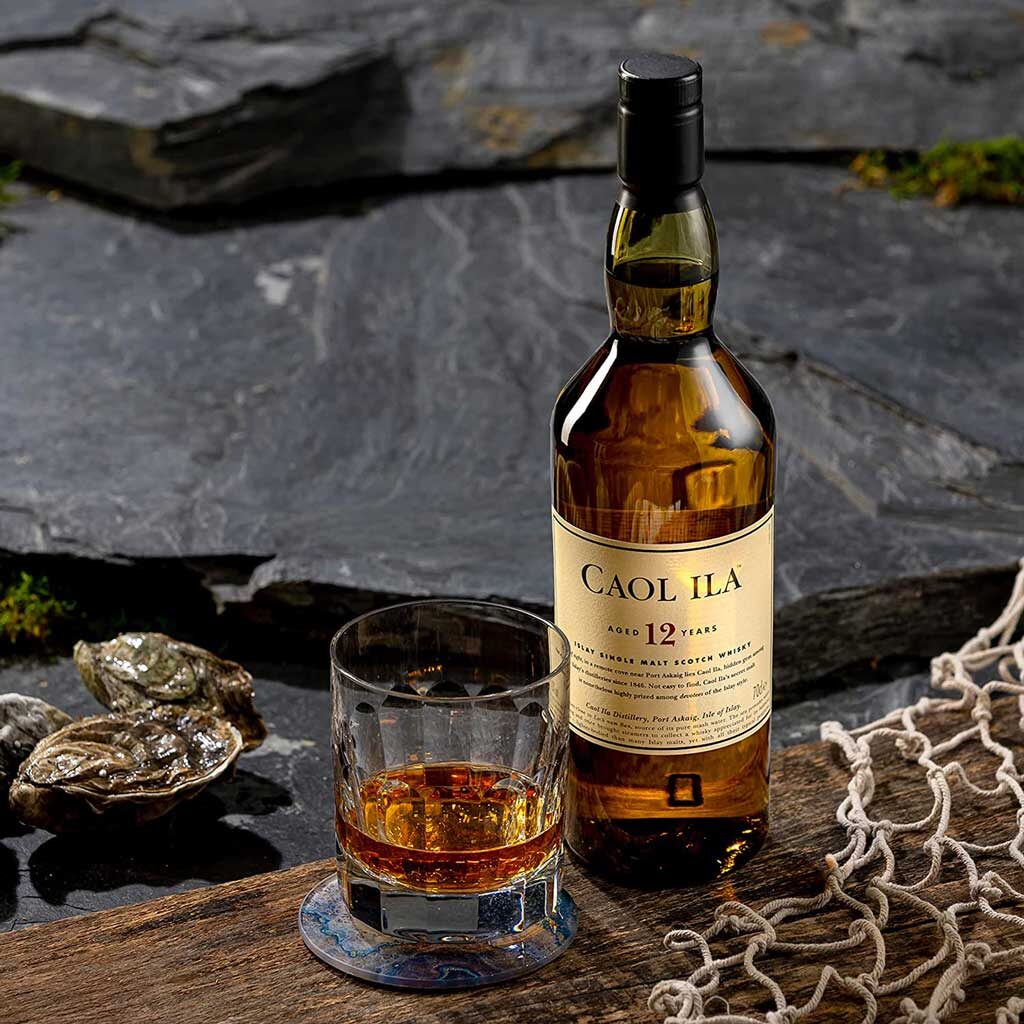
Caol Ila 12 review
Nose: Fresh, herbal. Rubbed peppermint leaves, stemmy, damp grass, smoky. Oily, cigar leaves, smoked ham, hickory. Lemon peels at the harbour.
Palate: Good body, oily, tar, elegant smoke. Hints of boiled sweets.
Finish: Long, peppery, spicy warmth, smoke.
Price: £47 / $57
Flavour profile of Caol Ila 12
Caol Ila 12 exemplifies the distillery’s dedication to quality and traditional methods, as it was aged in American oak barrels that previously held bourbon whiskey and ex-Sherry casks before being bottled.
It has a gold colour, with notes of heather, honey, and subtle smoke, and with a hint of apple blossom on the nose. It has a full-bodied flavour with hints of sweet caramel, vanilla, and gentle peat smoke that is balanced by a slight tangy edge. Towards the end, the smokiness becomes stronger, including the notes of charcoal and sea salt.
To complement its smoky, sweet, and salty taste, a great food pairing would be a classic Scottish dish such as haggis or smoked salmon. Both dishes contain a variety of flavours that will accentuate the smokiness of the whisky and bring out its complex flavour profile. Additionally, a side of crispy potatoes, roasted vegetables, or a creamy mashed potato dish would be excellent accompaniments. For a sweet finish, a rich and creamy dessert like crème brulée or a classic whisky cake would be a perfect pairing.
It has gained popularity among whisky connoisseurs who prefer a more intense flavour experience. Due to the extended ageing, this whisky contains higher levels of phenols, giving Caol Ila 12 more body and flavour compared to its younger siblings, without overpowering the delicate flavours produced during the distillation process.
Caol Ila 12 is an excellent choice for those looking for an Islay single malt that isn’t overly peated. Caol Ila 12 offers a unique drinking experience that allows both novices and seasoned dram aficionados to enjoy the best of what Islay whisky has to offer, with its balance of sweetness and smokiness combined with intense yet complex flavours throughout.
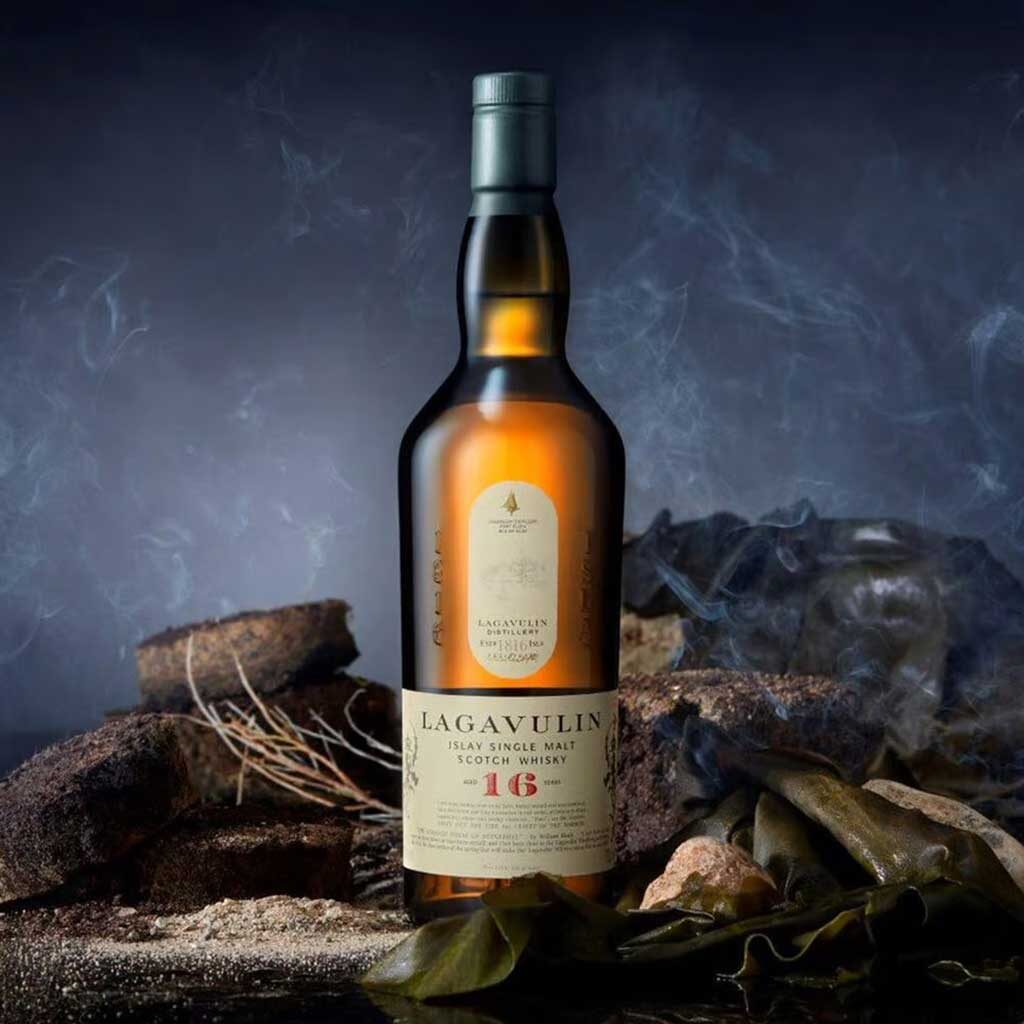
Lagavulin 16 review
Nose: One of the smokiest from the island of Islay. Very concentrated, reminiscent of iodine, mature Sherry, and creamy vanilla.
Palate: Thick and rich. Sherry and malt are both strongly present, but there is also a wonderful sweetness. Peat and oak in abundance.
Finish: Spicy, long, dates, figs, vanilla, and peat smoke.
Price: £68 / $83
Flavour profile of Lagavulin 16
Lagavulin 16 is an exemplary single malt Scotch whisky with the peat-smoke qualities associated with southern Islay, along with a captivating richness and dryness that make this tipple unparalleled. Such excellence has earned Lagavulin 16 its rightful place as one of the most sought-after spirits from the acclaimed Lagavulin distillery.
If you’re searching for the perfect accompaniment to your Lagavulin, consider bold and flavourful dishes such as gouda, cheddar, or blue cheese. Hearty seafood options like grilled salmon or mussels with a white wine sauce are also delightful combinations. If you’d prefer something outside of traditional pairings; smoked pork shoulder or charcuterie can be alluring alternatives. Alternatively, why not try a unique pairing of dark chocolate dessert or an alcohol-infused chocolate cocktail?
Lagavulin 16 is a go-to scotch whisky from the south coast of Islay renowned for its unique flavour. It tastes like Lapsang Souchong tea, but with more smoky undertones than peaty ones. This distinguished malt has long been beloved by Scotch aficionados and would be an excellent addition to any connoisseur’s collection!
| Caol Ila 12 | Lagavulin 16 | |
| Colour | Pale straw | Amber, burnished |
| Nose | Fresh, herbal. Rubbed peppermint leaves, stemmy, damp grass, smoky. Oily, cigar leaves, smoked ham, hickory. Lemon peels at the harbour. | One of the smokiest from the island of Islay. Very concentrated, redolent of iodine, mature Sherry, and creamy vanilla. |
| Palate | Good body, oily, tar, elegant smoke. Hints of boiled sweets. | Thick and rich. Sherry and malt are both strongly present, but there is also a wonderful sweetness. Peat and oak in abundance |
| Finish | Long, peppery, spicy warmth, smoke. | Spicy, long, dates, figs, vanilla, and peat smoke. |
| Rating | 7.5/10 | 8.0/10 |
| Age | 12 | 16 |
| Region | Islay | Islay |
| ABV | 40% | 40% |
| Classification | Single malt | Single malt |
| Cask | American and European | European |
| Chill filtered | Yes | Yes |
| Price (USD/GBP) | $57 / £47 | $83 / £68 |
Caol Ila 12 vs Lagavulin 16, final thoughts.
As you’ll have read, both of these whiskies are excellent Islay single malts. However, deciding between the two is a matter of personal taste. Each has their own distinguishing character and flavour which can be enjoyed on its own or used in different cocktails. Regardless, they’re both exquisite. Here’s our final thoughts.
The Caol Ila 12 is great for those looking for a lighter, more complex dram. In our opinion, it’s less peaty than the Lagavulin 16 with more evident background notes of citrus, hickory and herbs. If you’re looking for a less peaty dram, this would be the perfect choice between these two whiskies.
Lagavulin 16 on the other hand, is perfect for those looking for a bold, intense whisky experience. It presents bolder phenols due to the heavily peated kilning process, imparting that signature Lagavulin smokiness. With it’s assertive and medicinal flavour profile, this whisky leans towards the heavier end of the usual Islay expression. Peat, smoke and salt by the bucket-load, this whisky is much more in your face.
In the end, both whiskies are excellent choices and can be enjoyed in different ways. If you are looking for a special whisky to enjoy, either of these would be a great choice.


